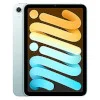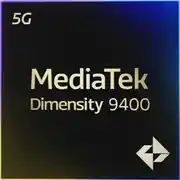Apple A17 Pro

Apple A17 Pro: A Revolution in Mobile Computing
April 2025
Modern smartphones are not just devices for calls and messages; they are powerful tools for work, creativity, and entertainment. At the center of this evolution are processors, and the Apple A17 Pro, introduced in 2024, has set a new benchmark for performance. Let’s explore what makes this chip unique and who it is suited for.
1. Architecture and Technology Process: 3 nm and a Six-Core Monster
The Apple A17 Pro is built on a 3-nanometer technology process from TSMC, the most advanced in the industry. This has allowed for the placement of 20 billion transistors on the chip, which is 15% more than the A16 Bionic. This progress has resulted in improved performance while reducing power consumption.
CPU: 6 cores with a frequency of up to 3.78 GHz
The processor uses a heterogeneous architecture:
- 2 High-Performance Avalanche Cores (3.78 GHz) for resource-intensive tasks like 4K video rendering, gaming, and AI processing.
- 4 Energy-Efficient Blizzard Cores (2.1 GHz) for background processes, conserving battery life.
A distinctive feature of A17 Pro is the 16 MB L2 cache (twice as much as the A16). This accelerates data access and reduces latency in multi-threaded scenarios.
GPU: Apple A17 with Ray Tracing Support
The six-core graphics processor not only provides smooth gaming at 4K/120 FPS but also supports hardware ray tracing (RTX effects in mobile games). The 16-core Neural Engine (42 TOPS) is used for machine learning, accelerating photo processing, real-time text translation, and AR application performance.
2. Performance in Real-World Tasks: Speed and Efficiency
Gaming
The A17 Pro can handle projects like Genshin Impact or Call of Duty: Mobile at Ultra HD settings with a stable 120 FPS. The Dynamic Resolution Scaling technology automatically adjusts the resolution according to the load, maintaining smoothness. In GFXBench tests, the GPU shows 25% higher fps than the Snapdragon 8 Gen 3.
Multimedia
The chip supports AV1, H.265, and ProRes 4K/60fps encoding/decoding. Videographers will appreciate that rendering a 10-minute video in iMovie takes only 45 seconds. For streaming, Wi-Fi 7 is available, with a peak speed of up to 40 Gbps.
Artificial Intelligence
The Neural Engine processes up to 30 operations per second in real time. For instance, the "Photo Mode" in the iPhone 16 Pro's camera analyzes a scene in 3 ms, automatically adjusting exposure and white balance. In applications like Adobe Lightroom, AI filters are applied with no delays.
Power Consumption and Heating
With a TDP of 8 watts, the A17 Pro is 20% more energy-efficient than its predecessor. In PCMark tests (simulating everyday use), a smartphone with this chip operates for 14 hours compared to 11 hours for Android counterparts. It uses a carbon vacuum radiator for cooling, preventing throttling even after an hour of gaming.
3. Integrated Modules: Connectivity of the Future
- Apple X65 Modem supporting 5G mmWave and Sub-6 GHz (speeds up to 10 Gbps).
- Wi-Fi 7 (802.11be) with a channel width of 320 MHz — perfect for streaming 8K and online gaming.
- Bluetooth 5.4 with improved energy efficiency for gadgets like AirPods Pro 3.
- Satellite Emergency SOS 2.0 — now available not only for emergency calls but also for sending coordinates via iMessage.
These modules are integrated into the SoC, reducing latency. For example, switching between 5G and Wi-Fi occurs in 0.2 seconds.
4. Comparison with Competitors: Who is Leading?
- Apple A16 Bionic (2023): A17 Pro is 40% faster in single-thread tasks (Geekbench 6 Single-Core: 2977 vs 2100).
- Qualcomm Snapdragon 8 Gen 4 (2024): Better in multi-threading (Geekbench Multi-Core: 7476 vs 7200) but less energy-efficient (TDP 10 watts).
- MediaTek Dimensity 9300 (2024): Cheaper, but lacks mmWave 5G support.
- Google Tensor G4 (2024): Focuses on AI, but its GPU is 35% weaker.
In synthetic AnTuTu 10 tests, the A17 Pro scores 1.58 million points compared to 1.45 million for the Snapdragon 8 Gen 4. For comparison, a top gaming laptop with an Intel Core i7-13700H scores about 1.2 million.
5. Use Cases: Who Needs the A17 Pro?
- Gamers: Maximum graphics settings, support for Xbox Cloud Gaming controllers.
- Content Creators: Editing 4K videos directly on the smartphone, exporting via Thunderbolt 4 (up to 40 Gbps).
- Travelers: Offline navigation with AI route optimization, satellite communication.
- Business Users: Secure transactions via Secure Enclave, multitasking with 10 apps simultaneously without lag.
6. Pros and Cons of the Processor
Pros:
- Record-high performance in Single-Core.
- Energy efficiency: up to 20% longer battery life compared to competitors.
- Support for innovations: ray tracing, Wi-Fi 7, AV1.
Cons:
- High device price (from $1099 for iPhone 16 Pro).
- No compatibility with Android gadgets.
7. Practical Tips: How to Choose a Smartphone with A17 Pro?
- Cooling: For gaming, opt for models with active cooling (e.g., "Pro Max" versions).
- Memory: At least 256 GB — games and 4K videos take up space.
- Display: OLED with a refresh rate of 120 Hz will unleash the potential of the GPU.
- Prices: New iPhone 16 Pro starts at $1099, while flagship models from other brands (like the ASUS ROG Phone 8) start at $1299.
8. Final Conclusion: Who Should Consider the A17 Pro?
This processor is designed for those who do not compromise. If you:
- Create video content for social media and want to edit on the go;
- Play AAA titles without lag;
- Value instantaneous response in multitasking — the A17 Pro is your choice.
Key benefits: time savings through speed, creativity without limits thanks to AI, and reliability even in extreme conditions. In 2025, this is not just a chip — it is the standard of the future, available today.
Basic
4x 2.11 GHz
GPU Specifications
Memory Specifications
Miscellaneous
Benchmarks
Phones with A17 Pro


Tablets with A17 Pro

Comparison of Devices with A17 Pro
Compared to Other SoC
Related SoC Comparisons
Share in social media
Or Link To Us
<a href="https://cputronic.com/en/soc/apple-a17-pro" target="_blank">Apple A17 Pro</a>


